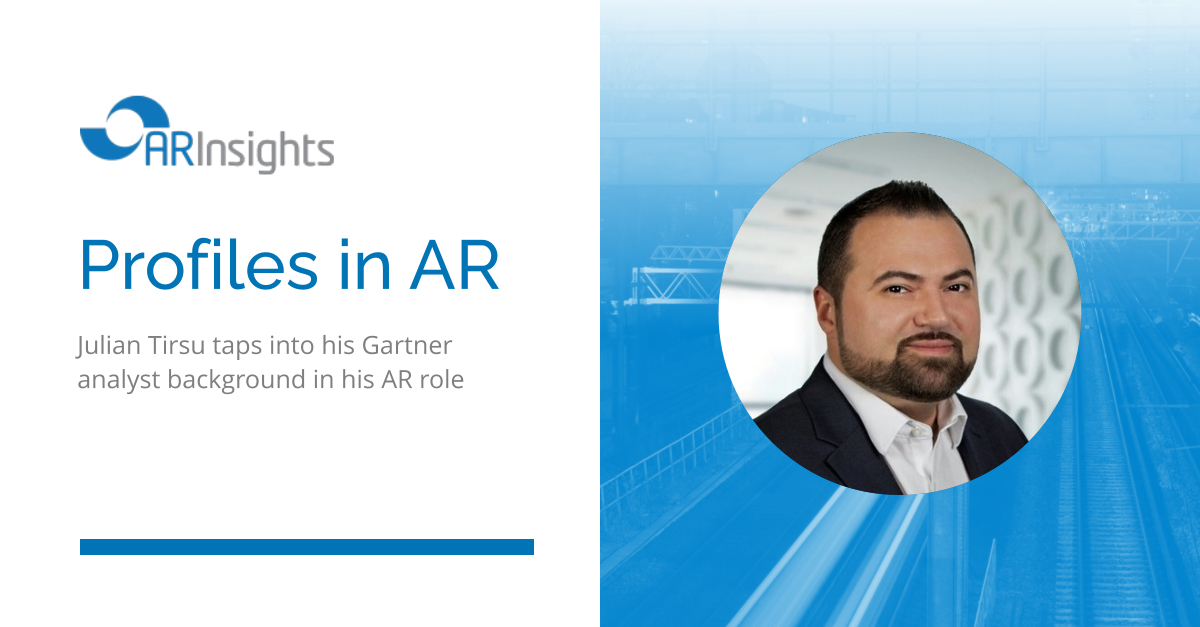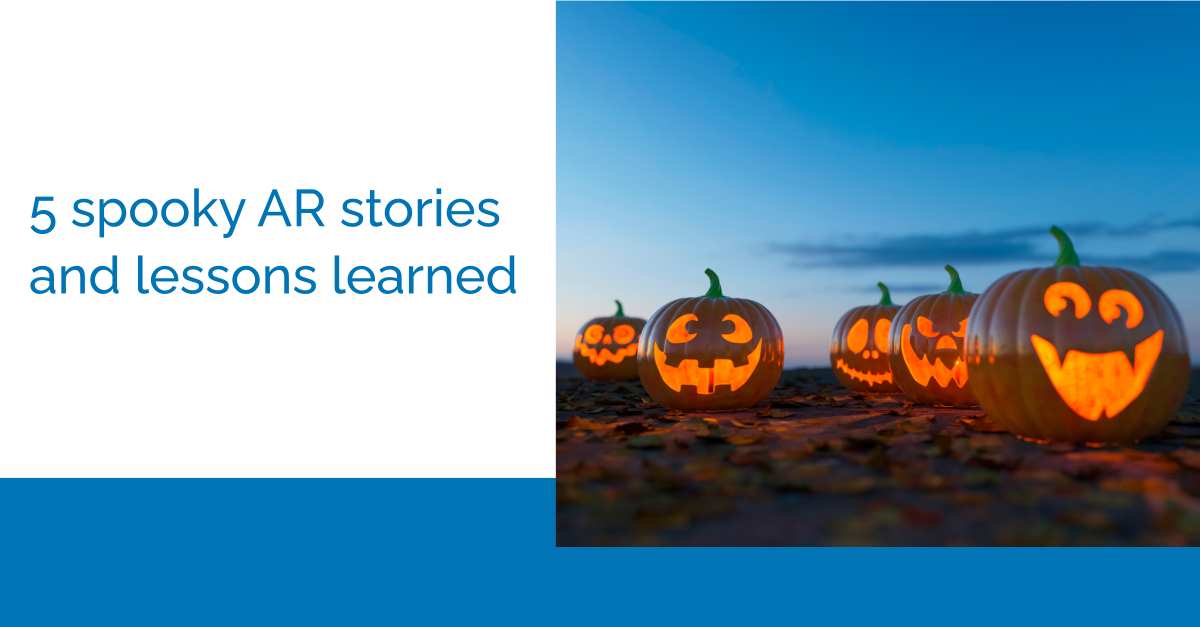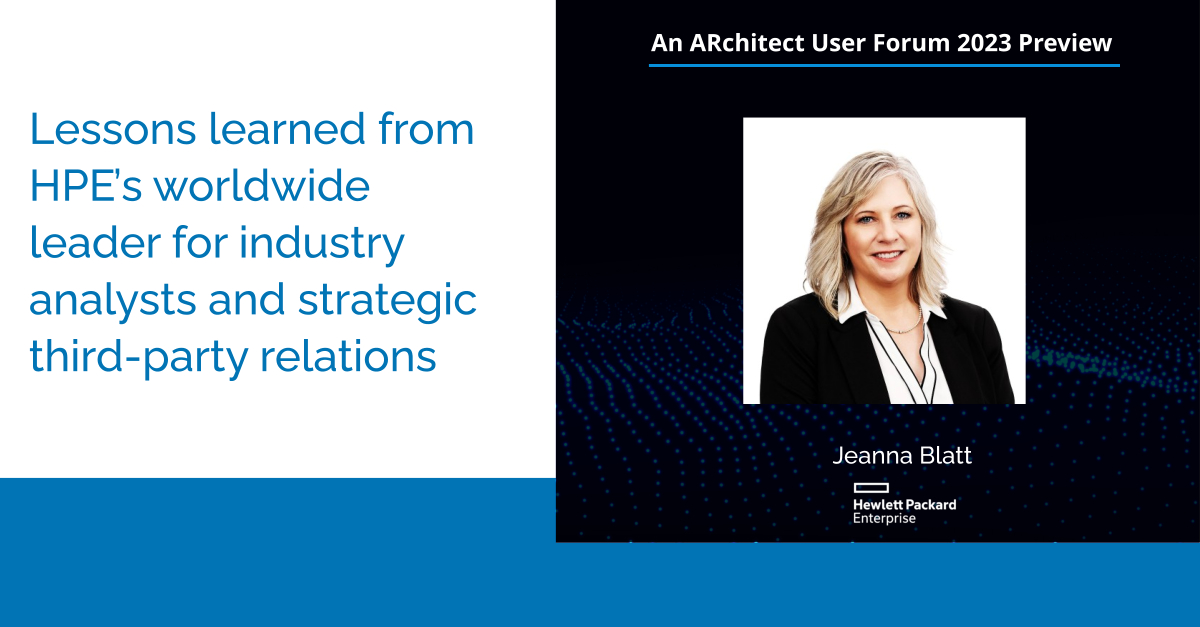What happens when a longtime analyst becomes an analyst relations (AR) professional? You get someone who knows the ins and outs of working with the analyst community — bringing valuable, firsthand experience and driving to-the-point (often superlative-free) knowledge exchanges that benefit both vendors and analysts.
Just ask Julian Tirsu. A Gartner analyst for over 10 years — focused on enterprise information archiving software, file analysis and e-discovery tools, information lifecycle management and more — he now serves as director of analyst relations at Egnyte, a secure multi-cloud platform for content security and governance that enables organizations to better protect and collaborate on their most valuable content.
We were thrilled to speak with Julian recently for this latest Profile in AR. Read on to learn why he made the switch to AR and how he uses his analyst background in his role today.
(Note: Julian gave us so much great info that we’ll be publishing Part II of the conversation next week. With tips about leveraging Gartner Peer Insights, analyst pet peeves to avoid and Magic Quadrant strategies, it’s an article you won’t want to miss!)
Q: What prompted you to leave Gartner and switch to analyst relations?
Julian: In a nutshell, it was about curiosity. I was at Gartner for more than a decade in a number of roles and had seen a lot of changes and done a lot of different things there.
In fact, during my time at Gartner, the company experienced exponential growth. When I started, Gartner had roughly 4,000 people, and when I left, there were easily over 17,000! That tremendous growth — not just from hiring, but from also through several acquisitions throughout the years — expanded many of Gartner’s practices and translated into multiple professional opportunities for me. I was able to work with many different people and teams.
But I was ready for a new opportunity and challenge. I knew I’d eventually leave Gartner for a vendor; it just made the most sense. And I looked into adjacent roles — product marketing, product evangelism, and so on. But analyst relations felt like the next logical step since I’d been speaking with a lot of AR professionals throughout the years, and I’d developed an interest in the field.
My specific interest in analyst relations actually began early on, when I was a junior research associate at Gartner. I met an AR professional at a Gartner conference and was fascinated by how many different departments they typically interacted with on a daily basis within their organization.
I’ve seen that firsthand now, too, in my role at Egnyte. In fact, I recently gave a presentation to our executive team and highlighted how, in AR, we’re working with marketing, product, sales, customer support and our executives to help drive success.
That’s part of the thrill of AR — doing something different every day. It’s not as regimented as what I did as an analyst: researching a topic over a period of time, creating content based on that, going through the peer review cycle and a number of edits, and finally publishing a finished product. Of course, I also had many customer inquiries and vendor briefings on a weekly basis — but by and large, my schedule was the same. And now I’m enjoying greater variety and autonomy in my day-to-day.
Q: Did anything surprise you about the transition to AR?
Julian: The most surprising thing is that it feels like there’s a very small community of analyst relations professionals. It’s very easy to feel connected.
In terms of the amount of AR pros globally, I hear different numbers all the time: somewhere between 3,000 and 4,000. But when you look at some of the specific cohorts of analyst relations professionals and where they interact — this would be through the IIAR> [Institute of Influencer & Analyst Relations], KCG [Knowledge Capital Group] Connects, Forrester’s AR Council and so on — in all these communities, what surprised me the most is that I run into the same folks all the time. There’s a core group of 50-100 individuals who frequently attend best practices webinars and other AR community events.
As an analyst, I noticed, too, that many seasoned individuals stayed in analyst relations. These AR pros were often the ones I had the closest relationships with. They seemed to care deeply about their jobs and about the practice of analyst relations in general.
This small-community feel has been a pleasant surprise because it allows me to build even more connections with the folks in these AR groups, and more importantly, to learn from them. Because even though I was familiar with AR as a Gartner analyst, there were a lot of things I didn’t know, which is a testament, I think, to how intricate AR really is.
Q: We’d love to hear about your work at Egnyte. What’s your typical day like?
Julian: I am a team of one within the broader corporate communications team. When I started back in April, I sought to implement processes to help me run strategy and handle the day-to-day management of inquiries and briefings. One challenging part was picking up where the program had left off: What had been done before? What was our history with certain analysts? Did we have relationships with the various research and advisory firms?
Now with many of these questions answered, my typical day involves reading a lot of research and keeping up-to-date with the analysts we’re following — especially our Tier 1 analysts.
I also make it a point, though, to read anything that’s new and pertinent to the spaces we play in. And there are quite a few different strategic directions we’ve gone in as a company. For instance, there’s a very big cybersecurity, data governance, and privacy initiative that’s been coming to fruition over the last year or two, and we want to make sure we’re tapping the right analysts for their expertise and making them aware of Egnyte’s value proposition. That means having an ongoing cadence of inquiries and briefings, so they understand what the latest and greatest is from us. And more importantly, it’s looking at: how do we learn from these analysts?
So, on a daily basis, and across the spaces we play in, we’re looking at which analysts we are having conversations with and how we contextualize their recommendations. Because at the end of day, we definitely want to develop relationships rather than just have outbound communication.
So, as a company, we’re switching gears a bit in our AR strategy and making sure we’re taking the anecdotes and information that we’re hearing from the analyst community and including them in our marketing and messaging. If we’re going to market in a specific vertical, we examine how we can tap analyst feedback to address the nuances and caveats that come with that vertical.
In the end, my day-to-day process includes reading research, managing the Tier 1 analysts, and looking into opportunities with Tier 2 and boutique research and advisory firms — and then starting to build meaningful, mutually beneficial relationships.
Q: How does your background as an analyst inform the way you practice AR?
Julian: Being on both sides gives me a lot of perspective. Having been an analyst, and having had lots of conversations with AR professionals, I know exactly how a briefing should be run. I know exactly how an inquiry should be run. I know when things are working well and when things are working poorly. And I also know how to think outside the box for different types of processes.
I try to apply that knowledge and experience to our business. So, for example, one of my first challenges at Egnyte was getting a speaker roster together for analyst presentations. Among the many great advocates for our brand, it’s important to put analysts in touch with those who can speak cohesively and succinctly about our message, so the information is of value to the analyst community and custom-tailored to each analyst. There shouldn’t be too much marketing fluff or, on the flip side, too much technical jargon that could go over people’s heads.
So for speakers, it’s about striking the right balance. It’s about being able to convey our heritage, our features and capabilities, and then, most importantly, the meat of the value proposition. That is, companies need to answer: What are you solving for that’s unique or that customers they can’t live without? How are you doing it in verticals? Are you taking that strategy horizontally or at scale?
From my background, too, I know that analysts like to have an ongoing cadence of communications with relevant vendors. So at Egnyte, we, first of all, make sure that the analyst is a good fit for us. That often means doing an inquiry to learn about their research agenda. Then, if we target a new analyst, we build out a specific cadence — whether that’s an inquiry to update them periodically, quarterly, or as necessary based on their preference.
And we build out project timelines too. For example: What is the message we are trying to deliver for this specific cohort at Gartner? Or how do we deliver the same message to other boutique firms that we don’t have subscriptions with?
I am also trying to make our periodic updates as self-service as possible by building out an analyst portal in the future. This is just one piece in the overall context of building an ongoing cadence with the analyst community.
Q: How can analyst relations professionals build stronger relationships with Gartner and other analysts?
Julian: First, make sure you’re not being too marketing-centric when you’re having conversations with analysts.
It’s also important to do your homework on the analysts themselves; that’s why I really like prep documents. You’ve got to look at: What are the research agendas that the analyst has? Who are they talking to frequently? What are they posting on social media? And figure out their background too; you can scour their bios, LinkedIn, and social media for those details.
It pays off. For example, prior to our most recent inquiry, I was pointing out an analyst’s background to our spokespeople. One of them had previously worked at the exact same company as the analyst 20+ years ago. That was one of the first things mentioned on the call and so that gave an immediate icebreaker and a pleasant introduction that was certainly far more impactful and unique, versus just talking about weather.
It also made the analyst more personable toward us, and we know that next time around, they’ll remember Egnyte and our spokesperson because of that connection.
So if there’s anything you can do to build connections like this, it’s very helpful. For me, for instance, when I meet new analysts, I let them know about my analyst background. It’s a way we can relate, and it assures them that I know what they’re looking for. They’re very much appreciative of that — they know I’m there to help our spokespeople to provide exactly what they need, they are thankful for the prep work that we’re doing on our end, and they know we’re looking to build a mutually beneficial relationship.
Q: What three adjectives would you use to describe analyst relations?
Julian: Impactful, omniscient, and passionate.
***
Many thanks to Julian for sharing his career journey and terrific insights! If you want to reach Julian, you can connect with him on LinkedIn.
And don’t miss Part II of his interview, which will be published next week — covering tips for improving your positioning in Magic Quadrants, how to use Gartner Peer Insights to your advantage and more.




